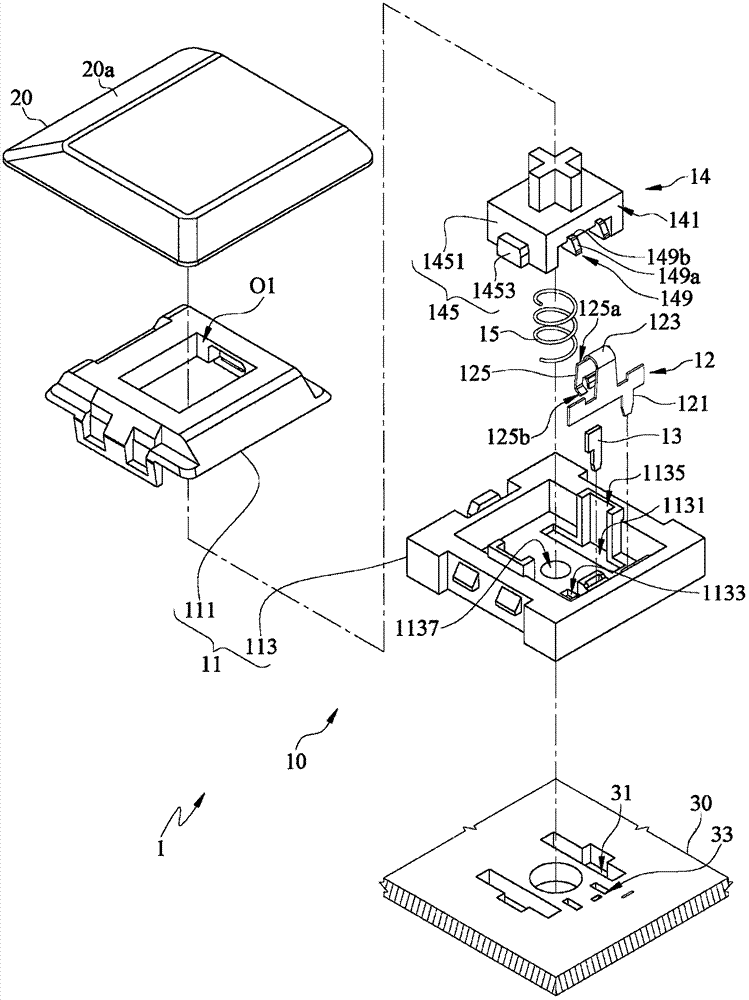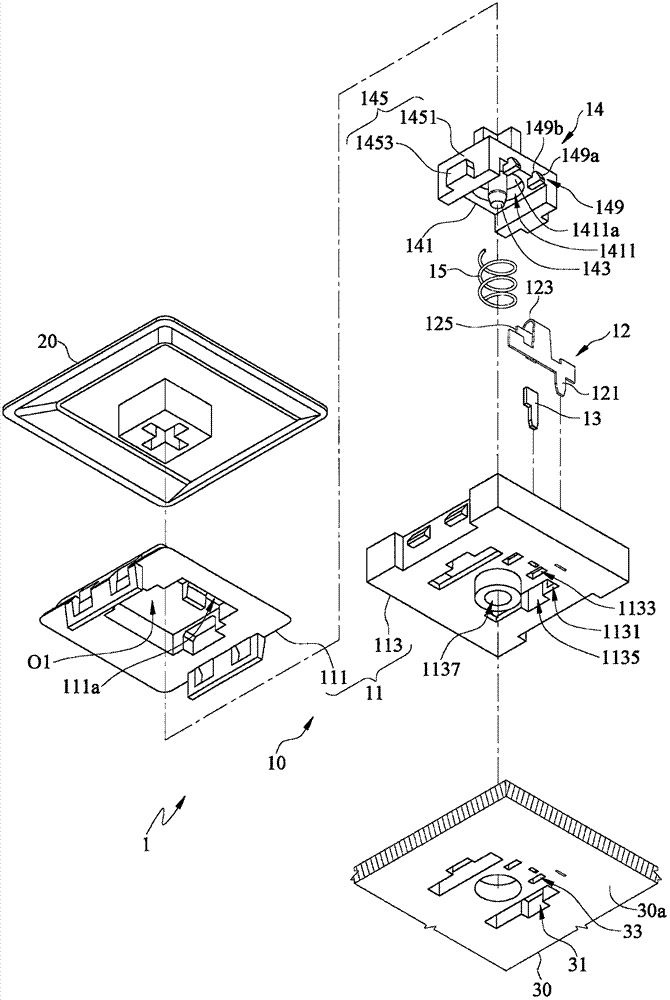Key assembly and mechanical-type keyboard
A key and component technology, applied in the direction of electrical components, electrical switches, circuits, etc., can solve problems such as the total height and thickness of the keys
- Summary
- Abstract
- Description
- Claims
- Application Information
AI Technical Summary
Problems solved by technology
Method used
Image
Examples
Embodiment Construction
[0080] The detailed features and advantages of the present invention are described in detail below in the embodiments, the content of which is sufficient for any person skilled in the art to understand the technical content of the present invention and implement it accordingly, and according to the contents disclosed in this specification, claims and accompanying drawings, The related objects and advantages of the present invention can be easily understood by anyone skilled in the art. The following examples further illustrate the concept of the present invention in detail, but do not limit the scope of the present invention in any way.
[0081] In order to realize the thinning of the mechanical keyboard keys without affecting the advantages of the mechanical keyboard such as stable hand feel and long life, the hand feel mainly depends on the pressing pressure and stroke, and the life influencing factor mainly lies in the durability of the light touch switch. This application ...
PUM
 Login to View More
Login to View More Abstract
Description
Claims
Application Information
 Login to View More
Login to View More - R&D
- Intellectual Property
- Life Sciences
- Materials
- Tech Scout
- Unparalleled Data Quality
- Higher Quality Content
- 60% Fewer Hallucinations
Browse by: Latest US Patents, China's latest patents, Technical Efficacy Thesaurus, Application Domain, Technology Topic, Popular Technical Reports.
© 2025 PatSnap. All rights reserved.Legal|Privacy policy|Modern Slavery Act Transparency Statement|Sitemap|About US| Contact US: help@patsnap.com



